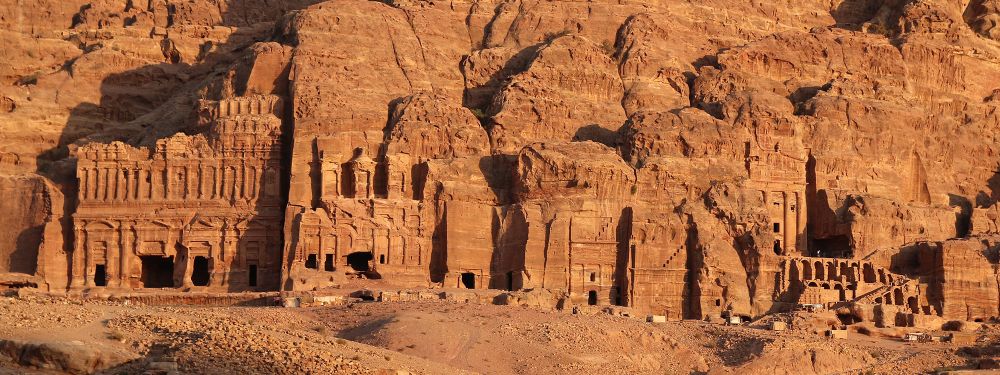

The ancient city of Petra, carved into the rose-red sandstone cliffs of southern Jordan, has been a magnet for travelers and archaeologists for centuries. Recognized for its archaeological, historical, and architectural significance, Petra was declared a World Heritage Site by UNESCO in 1985, which greatly elevated its status on the global tourism map.
Tourism in Petra can be traced back to the early 19th century when it was rediscovered by Swiss explorer Johann Ludwig Burckhardt in 1812. His descriptions of the 'lost city' captured the imagination of the Western world. Throughout the 19th and early 20th centuries, Petra lured more adventurers, scholars, and tourists who ventured to explore its grandeur.
Once a flourishing trading center of the Nabataean empire between 400 B.C. and A.D. 106, Petra's appeal lies in its complex of palaces, temples, and tombs which were cut from the towering rock faces surrounding the area. Among the most impressive of these structures are the Royal Tombs, known for their intricately designed facades.
The Royal Tombs are a series of large tombs located in the western cliffs of Petra. Notable among them are the Urn Tomb, the Silk Tomb, the Corinthian Tomb, and the Palace Tomb. They are called 'Royal' because of their impressive appearance, but it is not definitively known if royalty was buried within them.
The Urn Tomb, for example, is famed for its enormous facade towering over 20 meters high, and later served as a Byzantine church. These tombs embody the engineering marvels and artistry of the Nabataeans, blending Hellenistic architecture with native Nabataean design.
Petra's popularity surged especially after being featured in the 1989 film Indiana Jones and the Last Crusade. It has since become Jordan's most-visited tourist attraction, drawing hundreds of thousands of visitors yearly.
Today, modern tourism trends in Petra focus on sustainable and responsible travel. Efforts are being made to preserve the delicate architecture and environment of this ancient city while providing a robust experience for tourists. The site facilitates night tours, called Petra by Night, which offer a unique perspective of the tombs and the Siq lit by candlelight.
Innovative digital developments, like virtual reality tours, augment the visitor experience, while hiking trails and eco-friendly accommodations cater to adventure tourists and those seeking to minimize their environmental footprint.
The Royal Tombs of Petra continue to amaze, representing a blend of human endeavor and natural wonder. As tourism evolves, the commitment to protecting and promoting this ancient treasure ensures that it will captivate visitors for generations to come.